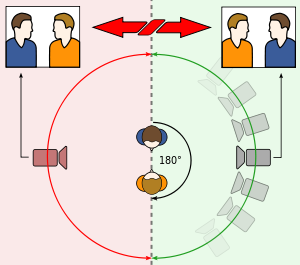Anatomy of a Murder
The opening of the film uses cartoonised body and uses close ups on different parts off it. This is not very graphic and its quite simplistic which gives the impression that the film isn't going to be extremely violent even though it is about murder. We get an impression that it could possibly be quite light hearted. Also using the body it makes it clear that the film is going to be about people being killed as we are shown all the body parts seperately. This clearly links in to the title. The font they use is a white sans-serif font. This makes it quite informal which links into the sense that the film could be lighthearted. Using white subverts our expectations. White connotes to innocence and purity which is not something that is at all related to murder. However, it is written on a black/grey background which relates more to murder as black can connotes to death and danger. The music used is quite upbeat which is contrapuntal. It yet again subverts our expectations of a film about murder, it is quite disturbing that the music is so happy when the film is going to be about people getting murdered.
Se7en
The establishing shot of the film is a close up on the pages of a book. This suggests it will be quite a significant item in the film as it is an image used constantly throughout the opening. Also throughout the opening they use quite a few close ups on the hands which suggests they are also quite important. They are busy doing things and they grate off their own fingertips which adds a sinister mood to the film almost immediately. The music used goes really high pitched at some parts of the opening. This adds to the tension which is being built by the sinister images being shown. It is quite jumpy which adds to the impression that this film is going to be scary. It is parallel sound, we would expect this music to be used in a horror film. Lots of sharp silver objects are shown throughout the opening like the scissors and the needle. This adds a sense of danger and helps to build the tension, also the implements are very clean which could show that they are well looked after or that they are new either way they are going to do their job properly and professionally. Just like in Anatomy of a Murder they use white font on a black background. The white stands out on the black which juxtaposes, it gives the impression that innocence doesn't belong in the film and that purity isn't going to be shown. This emphasises the horror genre of the film.
Grand Prix
They uses a sound bridge right at the beginning of the film the lion roarign turns into the sound of a car reving. This instantly lets us know the film is about cars and racing. It also flows smoothly straight into the film which gives it a sense of continuity. The establishing shot of the film is a close up of the car exhaust. This confirms to the viewer where the reving sound came from. They also use close ups on the tyres and other parts of the car which shows that everything is new which makes it look like this is a professional race. One of the drivers is in a white tracksuit which gives the impression that this character is quite innocent and he will race fair. Compared to drivers in black tracksuits which could be implied that they will be more relentless to win. Yet again the film uses a white font on a black background(this appears to be a common feature of thriller films) which makes the writing stand out so all of our attension first of all is on who is going to be in the film. They clearly thought that telling people the actors and film producers was the most important thing to start the film with.





